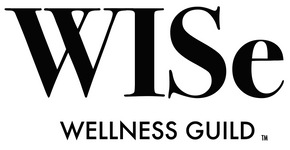
Edgework: Pushing Ourselves Out of Our Comfort Zone

As humans, we often find solace and security within the confines of our comfort zones. These cozy spaces shield us from uncertainty, fear, and the unknown. However, there is a world of growth, learning, and exhilaration that awaits us beyond those familiar boundaries. This world is known as "edgework" – the practice of intentionally pushing ourselves out of our comfort zones to explore new frontiers and reach our full potential. Let's delve into the significance of edgework, the benefits it offers, and how to embrace this transformative journey.
Understanding Edgework
Edgework refers to the process of actively seeking and engaging with challenging experiences that lie on the edge of our capabilities. The concept was first introduced by sociologist Stephen Lyng in the 1990s, who used it to describe the voluntary pursuit of high-risk activities like extreme sports. However, the essence of edgework goes beyond adrenaline-fueled adventures and can be applied to various aspects of life, including personal growth, professional development, and creativity.
Benefits of Edgework
-
Personal Growth and Resilience: By pushing ourselves beyond the familiar, we confront our fears and limitations. As a result, we build resilience and develop a stronger sense of self. The experiences gained during edgework enable us to grow personally and face challenges with confidence.
-
Expanded Comfort Zones: Stepping out of our comfort zones enlarges them in the process. What was once daunting becomes more manageable, and we become more adaptable to change. This newfound adaptability can lead to a richer, more fulfilling life.
-
Enhanced Learning and Creativity: Embracing edgework exposes us to novel situations that demand creativity and innovative problem-solving. This heightened mental stimulation encourages continuous learning and fuels our creativity in other aspects of life.
-
Overcoming Limiting Beliefs: Many of us harbor limiting beliefs about ourselves, preventing us from realizing our true potential. Edgework forces us to challenge these beliefs and proves to us that we are capable of more than we thought.
-
Sense of Accomplishment: The triumph of pushing our boundaries and achieving new milestones creates a sense of accomplishment and pride. These victories serve as a constant reminder of our inner strength and motivate us to tackle even more significant challenges.
Embracing Edgework
-
Identify Your Comfort Zone: Begin by understanding where your comfort zone lies. Reflect on the areas of your life where you tend to play it safe and avoid risks.
-
Set Realistic Goals: Start with small, achievable challenges that are just beyond your current comfort zone. Gradually increase the difficulty level as you gain confidence.
-
Embrace Failure as a Learning Opportunity: Failure is an inherent part of edgework. Instead of viewing it as a setback, treat it as an opportunity to learn and grow. Analyze what went wrong, adjust your approach, and try again.
-
Seek Support and Guidance: Surround yourself with individuals who encourage and inspire you to explore new possibilities. Connect with like-minded people or seek the guidance of mentors who have experience in the areas you wish to explore.
-
Celebrate Your Progress: Acknowledge your progress and celebrate each milestone, no matter how small. Rewarding yourself reinforces positive behavior and encourages you to keep pushing forward.
Embracing edgework is a transformative journey that empowers us to break free from self-imposed limitations and discover our true potential. By pushing ourselves beyond our comfort zones, we embark on a path of personal growth, resilience, and creativity. While the journey may be challenging, the rewards are immeasurable – a life enriched by experiences, accomplishments, and a profound understanding of our capabilities. So, dare to take the first step, for it is on the edges of life that we truly find ourselves.
Header image by leeloo on pexels
Blog image by pixabay on pexels

Leave a comment